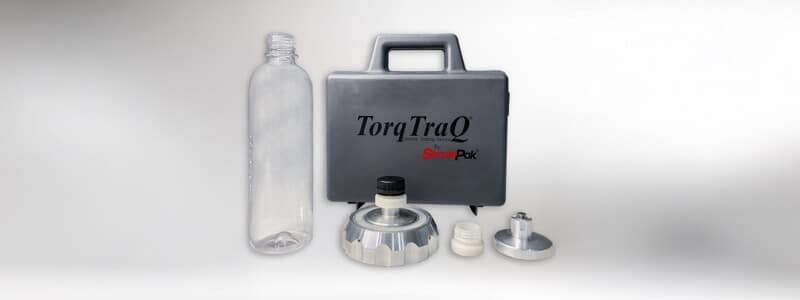A torque tester is a critical tool for ensuring product quality and consistency in the bottling industry. Whether you’re measuring cap tightness to prevent leaks or conducting quality control checks, proper torque tester maintenance is crucial for accurate and reliable readings.
By following best practices and incorporating expert torque tester tips, you can maximize the use of your torque tester, minimize errors, and optimize your production process. Let’s explore torque tester maintenance strategies, calibration techniques, and best usage practices to help you maximize efficiency and accuracy.

1. Regular Torque Tester Maintenance Extends the Life of Your Equipment
Routine torque tester maintenance is essential for ensuring longevity and accuracy. Dust, debris, and mechanical wear can cause faulty readings, leading to product inconsistencies. A well-maintained tester will provide more reliable results and reduce downtime.
Daily and Weekly Torque Tester Maintenance Checklist
Follow this checklist for daily and weekly maintenance:
- Clean after every use: Wipe down surfaces with a lint-free cloth to remove dust and product residue.
- Check for loose components: Ensure all screws, clamps, and grips are securely fastened.
- Avoid moisture exposure: Store your torque tester in a dry, stable environment to prevent corrosion.
- Inspect grips and fixtures: Worn-out grips can cause inconsistent readings, so replace them as needed.
Following these torque tester tips for daily maintenance will help keep your equipment running smoothly.
Monthly Preventative Maintenance
Some tasks must be performed on a monthly basis:
- Perform a detailed inspection of moving parts.
- Apply lubrication to mechanical components (if applicable).
- Check for unusual noises or resistance when using the tester.
- Ensure that the display and sensors are functioning correctly.
Neglecting maintenance can lead to inconsistent readings, product defects, and costly downtime in bottling operations. A poorly maintained torque tester may provide inaccurate measurements, potentially compromising the integrity of your product seals and increasing waste.
By incorporating these daily and monthly torque tester tips into your maintenance routine, you can extend the life of your device and maintain precise results.
2. Proper Calibration Ensures Accurate Torque Readings
Even the best torque testers can drift out of calibration over time. Regular calibration is a necessary part of torque tester maintenance to maintain accuracy.
Frequency of Calibration
It’s important to follow a calibration schedule as follows:
- Daily: Quick verification of readings before use.
- Monthly: A thorough calibration check using certified weights.
- Annually: A professional calibration service to ensure long-term reliability.
Keeping your torque tester calibrated regularly will give you advance warning of issues.
How To Calibrate Your Torque Tester
Here are the basics of calibrating your torque tester. However, for step-by-step guidance, refer to our article, How To Calibrate Your Bottle Cap Torque Tester:
- Place the torque tester on a stable, level surface.
- Use a certified torque standard to verify the accuracy of the readings.
- Compare results with the manufacturer’s specifications.
- If readings are inconsistent, adjust the calibration settings according to the user manual or seek professional service.
Industries such as beverages, pharmaceuticals, and cosmetics require frequent calibration of torque testers to meet strict industry standards. Ensuring compliance with these regulations helps maintain product integrity, safety, and consumer satisfaction.

3. Choose the Right Torque Tester for Your Application
Not all torque testers are designed for the same applications. Choosing the correct model ensures accurate results and operational efficiency.
Types of Torque Testers and Their Uses
It’s helpful to understand the different types of SecurePak torque testers:
- Digital Torque Tester – Provides high-precision readings for laboratory and production environments.
- Spring Torque Tester – A manual, cost-effective option for simple quality control checks.
- TorqTraQ® Device – Ideal for portable, on-the-go torque testing.
- Incremental Bottle Torque Gauge – Used for detailed incremental torque measurement.
- Secure Seal Tester – Ensures leak-proof seals for carbonated beverages and other pressurized bottles.
Using the right torque tester for your operation improves efficiency and ensures precise torque readings.
4. Best Practices for Consistent Torque Testing
Even with proper torque tester maintenance and calibration, operator technique plays a role in achieving accurate readings. Training all operators on proper torque tester usage reduces variability in results. Inconsistent handling techniques can impact torque readings, leading to product defects or failed quality control checks. Standardizing testing procedures across shifts improves repeatability.
Tips for Reliable Measurements
Always position the bottle securely in the tester and apply force evenly to avoid skewing the readings. Conduct multiple tests per sample to ensure consistency.
Environmental Factors That Affect Readings
Temperature and humidity may affect the performance of your torque tester. To help reduce these issues:
- Conduct tests in a temperature-controlled environment to prevent fluctuations.
- Avoid excessive vibrations or movement during testing.
- Standardize the testing process across all operators to improve repeatability.
Following these torque tester tips will help you maintain accuracy and minimize variations in test results.
5. Avoid Common Mistakes in Torque Tester Maintenance
Many torque testing errors result from improper handling, lack of calibration, or overlooked maintenance. Avoid these common pitfalls to ensure reliable performance.
Frequent Issues and How To Fix Them
Some torque tester maintenance issues occur frequently, and you should be aware of:
- Over-Torquing or Under-Torquing: Excessive torque can damage caps and bottle threads. Insufficient torque can result in loose seals and leaks.
- Skipping Calibration: Failing to recalibrate regularly leads to inaccurate readings. Set a scheduled calibration routine to maintain precision.
- Using a Damaged or Dirty Tester: Dust and debris can affect grip and accuracy. Inspect your tester regularly and replace worn-out components.
By addressing these issues, you can prevent quality control failures and enhance the efficiency of your bottle cap torque tester.
FAQs: Torque Tester Maintenance
Below, we’ve addressed a few questions concerning torque tester maintenance. Please reach out if you’d like more information on this topic.
How often should a torque tester be calibrated?
Torque testers should undergo daily verification, monthly calibration checks, and annual professional calibration to maintain accuracy and compliance with industry standards.
What’s the most important step in torque tester maintenance?
Regular cleaning and inspection are key. Wiping down the tester after each use and checking for loose components or worn-out grips can extend the equipment’s lifespan.
Can environmental conditions affect torque test results?
Yes, temperature, humidity, and vibration can impact torque readings. It’s best to conduct tests in a controlled environment and minimize external disturbances.
Get the Most Out of Your Torque Tester with SecurePak
By following proper torque tester maintenance routines, calibrating regularly, and implementing best practices, you can ensure accurate readings and a streamlined bottling process. Applying these torque tester tips will help you maintain quality control and reduce costly errors. Get in touch to find the right torque-testing solution for your business!


